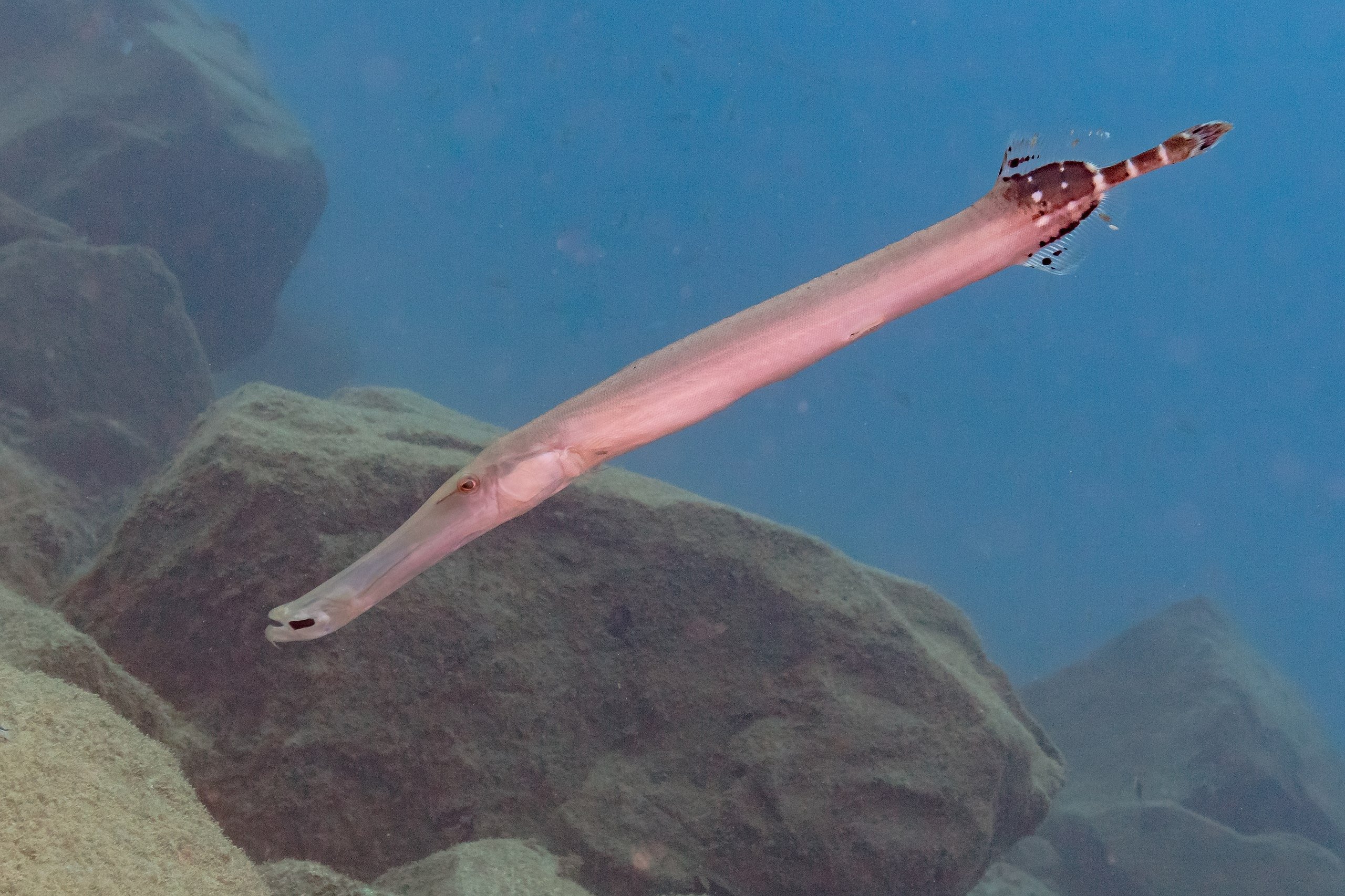
Found in tropical waters worldwide, trumpetfish are elongated creatures with long snouts, which they use to swallow small fish and shrimp. The large fish are known to use a variety of tactics to avoid being detected by their prey. They include changing color to blend in with their surroundings and hiding amid the long branches of soft corals. Now, researchers have found that the crafty fish often deceive their prey by hiding behind larger, friendlier fish.
"We see a lot of amazing strategies from animals across the animal kingdom in camouflage and concealment and the ways in which they disguise themselves, and they disguise their intent," said lead author Dr. Sam Matchette from the University of Cambridge. "This will be the first non-human example of a predator using another animal to conceal itself in its approach to its prey."

Dr. Matchette had heard reports of the trumpetfish's clever hunting technique. However, it had never been verified. So, in 2022, he and his colleagues decided to test if the strategy was effective.
The Cambridge researchers attached 3D plastic models of trumpetfish and parrotfish to a wire pulley system and deployed them inside a colony of damselfish. The species is a common prey of the trumpetfish.
The scientists began by pulling only the 3D parrotfish over the damselfish habitat. They then tugged just the trumpetfish model. The final experiment involved attaching the trumpetfish to the side of the parrotfish and moving the pair together.

Sure enough, the fake parrotfish passing above did not alarm the damselfish. However, when the trumpetfish "swam" past, they fled. The damselfish reacted similarly when the two fish went across the wire. But the response was slightly delayed since they could not see the trumpetfish until it was much closer. The researchers say this proves the clever hunting method works.
This is the first time a "stalking horse strategy," similar to the one used by humans, has been observed in animals. Historically, human duck hunters would hide behind horses or cattle when approaching the birds to avoid being detected. However, the Cambridge scientists, who published their findings in the journal Current Biology on August 7, 2023, believe other sea creatures may also be using it.
Resources: Livescience.com, Smithsonianmag.com, lamar.edu
